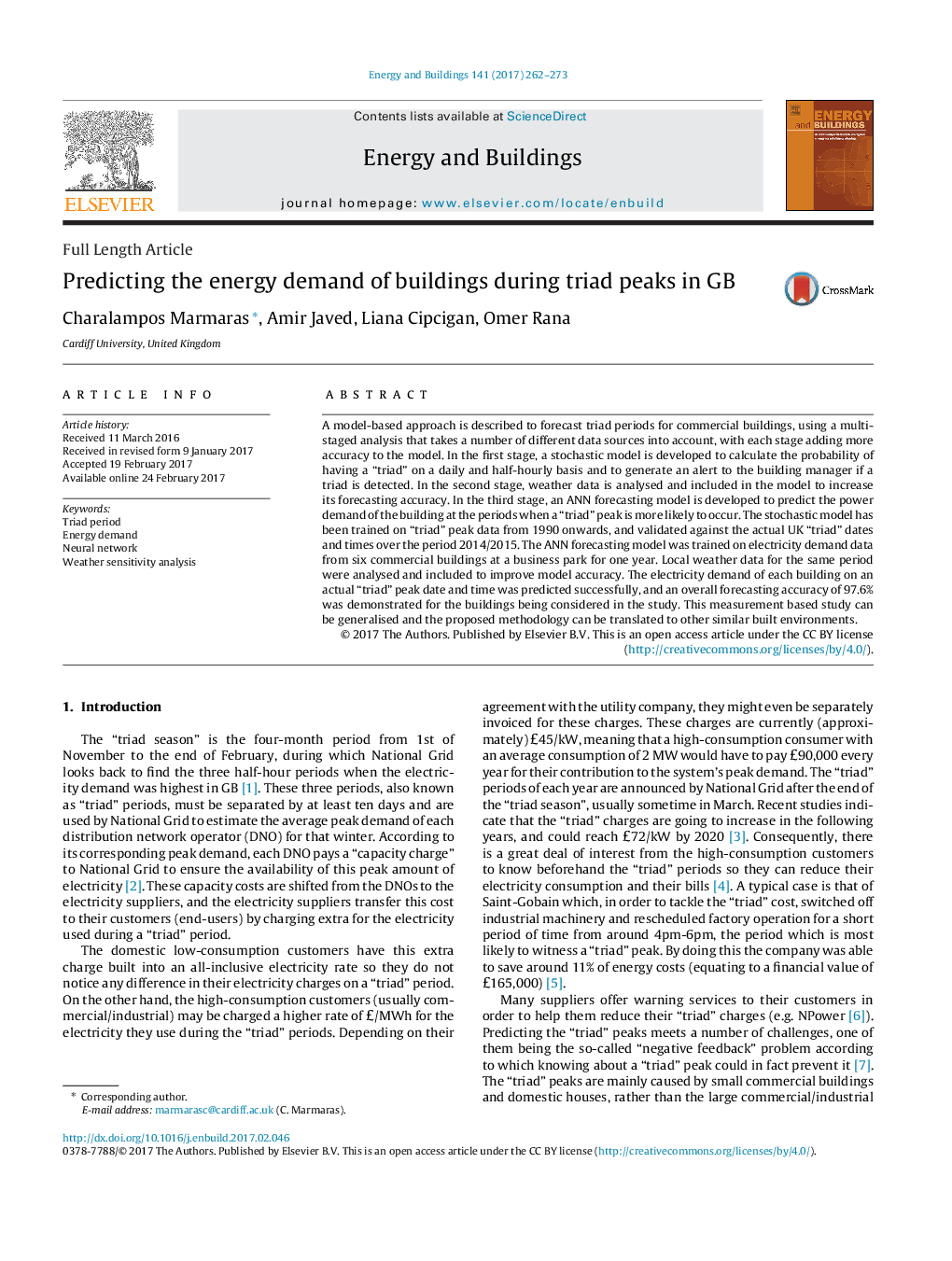| کد مقاله | کد نشریه | سال انتشار | مقاله انگلیسی | نسخه تمام متن |
|---|---|---|---|---|
| 4919078 | 1428949 | 2017 | 12 صفحه PDF | دانلود رایگان |

- A stochastic model was developed to calculate the probability of having a “triad” peak on a daily and half-hourly basis.
- Real weather data were analysed and included in the model to increase its forecasting accuracy.
- An artificial neural network forecasting model was developed to predict the power demand of buildings during triad peaks.
- The model was trained and tested on real “triad” peak data and building electricity demand data from Manchester.
A model-based approach is described to forecast triad periods for commercial buildings, using a multi-staged analysis that takes a number of different data sources into account, with each stage adding more accuracy to the model. In the first stage, a stochastic model is developed to calculate the probability of having a “triad” on a daily and half-hourly basis and to generate an alert to the building manager if a triad is detected. In the second stage, weather data is analysed and included in the model to increase its forecasting accuracy. In the third stage, an ANN forecasting model is developed to predict the power demand of the building at the periods when a “triad” peak is more likely to occur. The stochastic model has been trained on “triad” peak data from 1990 onwards, and validated against the actual UK “triad” dates and times over the period 2014/2015. The ANN forecasting model was trained on electricity demand data from six commercial buildings at a business park for one year. Local weather data for the same period were analysed and included to improve model accuracy. The electricity demand of each building on an actual “triad” peak date and time was predicted successfully, and an overall forecasting accuracy of 97.6% was demonstrated for the buildings being considered in the study. This measurement based study can be generalised and the proposed methodology can be translated to other similar built environments.
Journal: Energy and Buildings - Volume 141, 15 April 2017, Pages 262-273